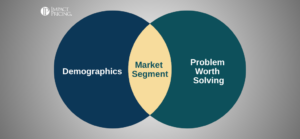As you read more and more about subscription pricing, you will see both of these terms. Often they are used to mean the same thing, what will you charge for? However, they should mean different things. This post explores the differences.
Pricing Metric
First, a pricing metric is what the seller charges for. Salesforce charges by the user. Dropbox charges by the storage. LinkedIn charges by the inmail. Visa charges a percentage of the transaction. Amazon charges a flat fee for Prime. Verizon charges by the minutes and texts. Uber charges by the mile. DirecTV charges by the channel. There are tons of examples.
Pricing is from the seller’s perspective. A pricing metric is a seller determining how to charge for their product or service.
You will notice in many of the examples, pricing metrics are bundled up into tiers and put into packages. For example, Verizon doesn’t charge you for every text you send, but they sell you a bundle of 1000 texts. DirecTV doesn’t charge you for every channel you get, rather they bundle them up into tiers. A pricing metric may have a charge for each additional unit, or there may be a number of units sold together.
How is a value metric different? Value is from the buyer’s perspective. All value is perceived value. If the buyer doesn’t perceive it, they don’t value it.
Value Metric
A value metric is how the customer measures the success of your product. When a customer buys Salesforce, they don’t think giving every salesperson access is a success. They think making each salesperson more effective is important. They may use metrics like revenue per salesperson or average time to close a deal. These are the metrics that matter to the customer.
When a customer grows, they use your product more, and they experience more value from your product. As a seller, you want to be able to capture some of that additional value. One way to do that is to make sure your pricing metric is correlated with your customer’s value metric.
Dropbox is a great example. Nobody wants to buy access to more hard disk space. Instead, they want to buy the ability to save, retrieve and share their important data. The more data they have, the more value they experience. One value metric for the buyer is the amount of data they want to save and share. Dropbox charges by the GB of storage. This is very highly correlated with their customer’s value metric. The more data a customer has, the more storage they need.
Salesforce is a less clear example. They charge by the user. What is a good value metric for the customer? Incremental revenue seems like a great one. Revenue per salesperson seems pretty good. These are the things Salesforce customers are really buying. Why does Salesforce charge by the user then? Well, you could argue that if you could make a salesperson 10% more efficient (I just made that number up) then a salesperson could generate 10% incremental revenue. The more salespeople, the more incremental revenue.
The correlation
The point of this blog was to look at the difference between a pricing metric and a value metric. When done well, they are very highly correlated, but they are not the same thing. One is from the perspective of the seller, the other from the perspective of the buyer. Keeping them separate will help you make better pricing decisions.














